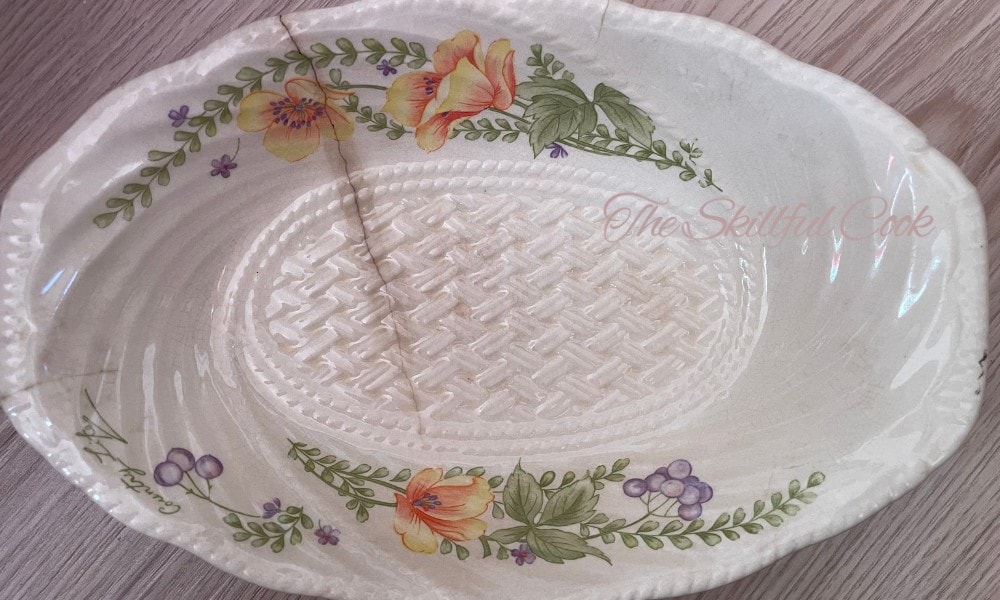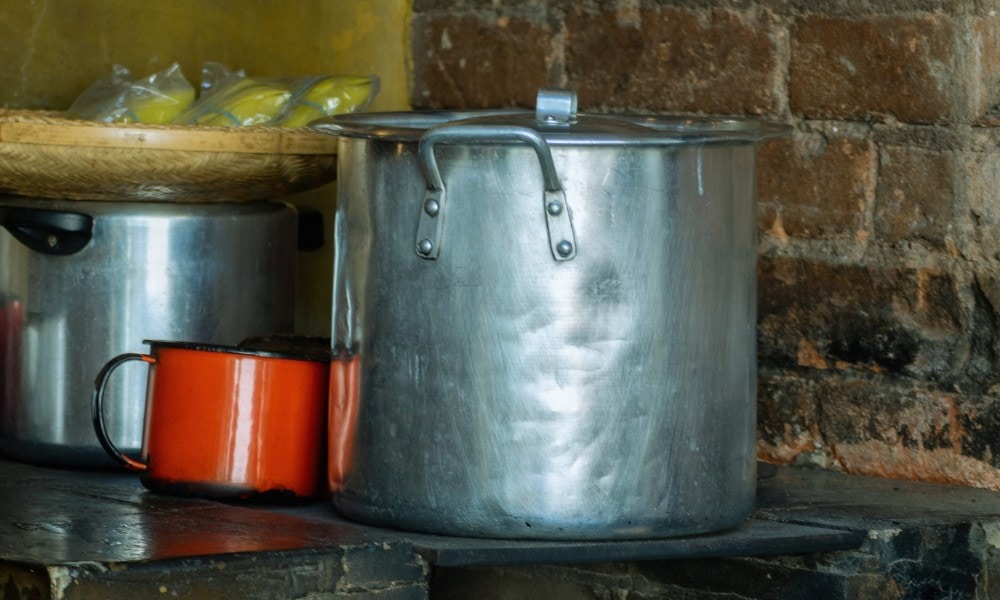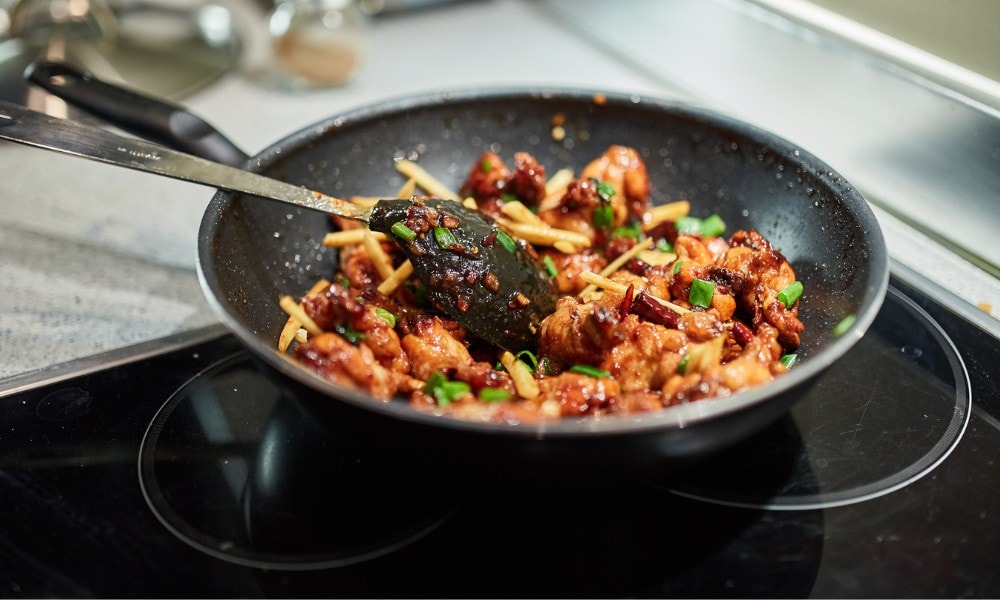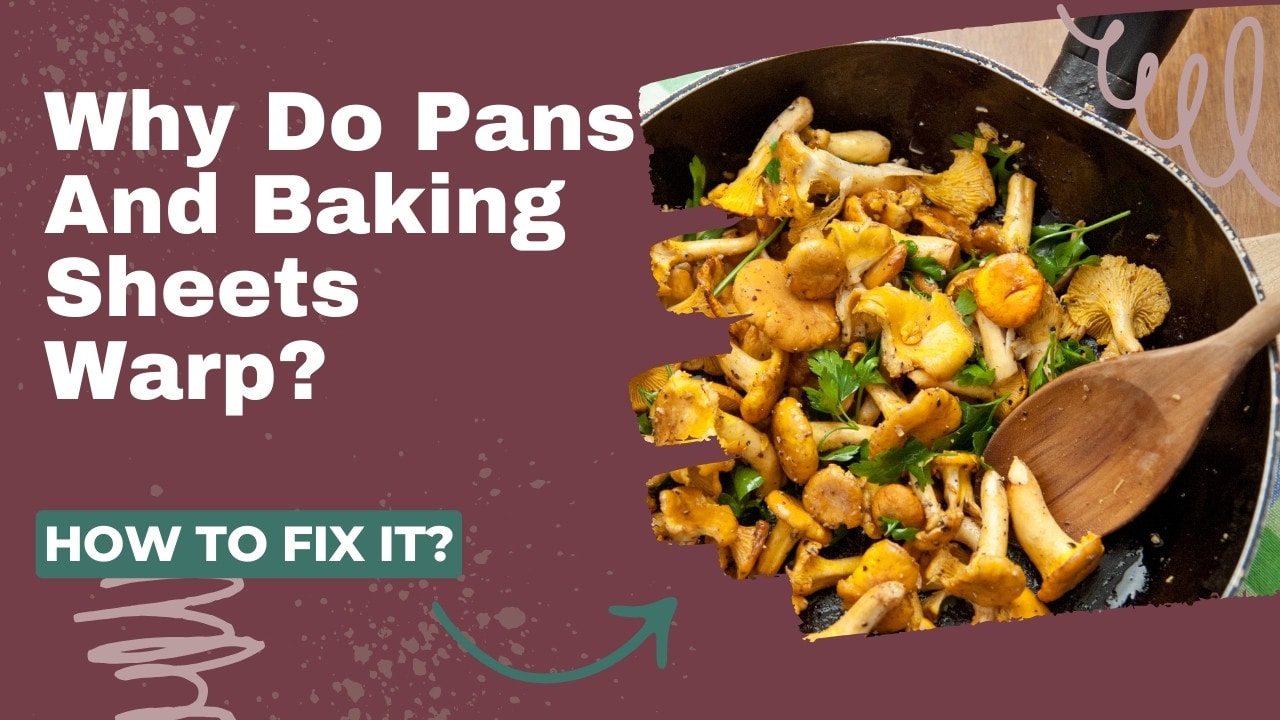As an avid cook who has experienced many incidents of burned, scratched, or discolored cookware, I’ve taken the worst blows from warped pans. They may not become totally unusable, but they’re such an eyesore that it might feel better to just get rid of them.
But the good news is that you can fix your warped pans. And even better, you can prevent warping by following simple tips.
Why Do Pans and Baking Sheets Warp?
Pans tend to warp because of variations in temperature across different sections of the cookware. When heated, certain areas expand, while colder regions retain their original shape. To prevent this, steer clear of abrupt temperature fluctuations and instead preheat your pans gradually over low heat.
What is Thermal Shock?
When you heat up a metal, its molecules expand. As it cools down, the molecules return to their normal shape. If this happens too quickly, it causes extreme stress to an object, called thermal shock.

If, for example, you dip your hot pan in cold water immediately after removing it from the heat, the molecules won’t have enough time to cool down gradually. This may cause brittle materials like ceramic or stoneware to shatter. More malleable materials will warp or deform.
Factors that Contribute to Pans Warping
Some amount of warping may be inevitable if a pan is poorly constructed or just very thin – like an aluminum baking sheet. I’m sure we’ve all heard the sudden “pop!” of a cookie sheet warping in the oven. But here are the factors that affect whether or not a pan is likely to warp:
Cookware Quality and Materials
The purity, thickness, and design or construction of a metal pan will affect its resistance to thermal shock. Low-quality cookware may warp from something as simple as adding cold food to a hot pan.

Thinner cookware warps easily because it has less material to absorb and distribute the heat. When heat is applied to thin cookware, it tends to cause rapid expansion, leading to distortion. Thicker cookware, on the other hand, has more material to absorb and distribute the heat, which makes it less susceptible to warping.
Aluminum and carbon steel warp most frequently, since they are malleable metals that can be made into thin cookware.
Tri-ply stainless steel and cast iron, like this Lodge cast iron skillet, are examples of thick, strong cookware that resist warping. (Though cast iron may crack instead!)
Uneven Heating
Hot and cold spots while cooking can leave your pans misshapen. If some parts of the pan or baking sheet are hot while others are still cold, the hot parts can bow. This can happen when you use a pan on a burner that’s the wrong size for the pan.
Warping can also happen in the oven. When you put your cold baking sheet in a hot oven, the flat bottom gets hot quickly, while the thicker rims take longer. This temperature difference puts the pan under thermal stress, especially the parts where the bottom meets the rims, and the pan gets distorted.
Electric and Induction Stovetops
Electric and induction stovetops are notorious for damaging cookware since they raise a pan’s temperature so quickly.

When a pot or pan’s base is in full contact with the stove’s surface, the bottom of the cookware absorbs almost all of the heat. So, the cold pan gets hot quickly and doesn’t have enough time to expand gradually. This situation is similar to a thermal shock, and it can easily damage many types of cookware.
Gas stove tops are less likely to damage your cookware like this because heat can escape through the burners.
Can You Fix a Warped Pan?
Your chance of fixing a warped pan depends on the amount of damage. In some cases, the pan will contract and return to its original shape after it cools. However, a pan that has warped once is likely to warp again the next time you heat it up.
If the warping remains once the pan is cool, you can unwarp the pan using simple tools. Here’s what to do.
- Heat the pan over the stove and place it on a heat-resistant, fixed surface.
- Place a towel between the surface and the pan to prevent slips and further damage.
- Put another towel on the bottom of the pan and gently hit it with a hammer, targeting the bulged areas.
- Check the pan frequently and heat it again if it cools down and you need to repeat hammering.
Note. You can use the wooden block method instead of hammering if the pan is severely warped. The tools and steps are the same. The only difference is that, instead of hammering, you place the wooden plank on the warped area and hammer the wooden block.
Watch this YouTube video for a demonstration
How To Prevent Pots and Pans From Warping
Pans will never return perfectly to their normal shape after warping (unless they are re-heated and re-fashioned). So here are some tips to prevent pans from warping in the first place.
Tips to Prevent Warped Baking Sheets
Conclusion
Warping can happen with any kind of cookware. But thin pans and baking sheets are most likely to warp. Uneven cooking and thermal shocks are the biggest culprits. Thankfully, you can generally prevent warping by preheating your pans over low flames and choosing the right size burners for your cookware.
If you have experienced warped pans, please share with us below!









